FAQs
You can use our website to approximate a price for your fertility treatments or specify appointment details and
see the projections of how much exactly will it cost you! It is that easy!
Q: Do you provide fertility, gynaecological and obstetrics care for patients covered under a Health Management Organisation (HMO)?
A: Yes, we provide medical care for anyone who has this type of healthcare included. Regardless of whether it is under their Platinum, Gold, Silver, Bronze or any other similar healthcare insurance plan; we will provide quality and safe Medicare to you!
Q: How long is the first appointment?
A: It may vary, but generally speaking, the first appointment will be merely a consulting one. We will be checking the overall state of your reproductive health. Then our consultants will provide recommendations on any further gynaecological or IVF procedures you might need.
Q: Who performs my treatment?
A: We have a dedicated team of 3 different consultants. Each of them has a profound medical experience and degree. Also, we have fertility nurses, specialist nurses and midwives in our clinic’s team. Our staff will be more than enough to provide a timely, efficient reproductive and fertility care for all of our patients!
Q: What lifestyle choice can improve my fertility?
A: Infertility affects 1 in 6 couples. It causes significant stress, unhappiness, family disharmonies. May need costly laboratory tests and IVF to fix. As couples or individuals we can do a number of things to boost our fertility that will not cost us a penny… like…
What is NEW, USEFUL and ADVISED include appropriate LIFE-STYLE practices such as avoidance of excessive usage of..
1. Alcohol in both females and males. Not more than 1 – 2units per week and 2 – 4 units/week are recommended for both females and males, respectively.
2. It is recommended that couples should keep away from smoking (which have detrimental fertility effects.
3. Limited Coffee, Tea, Cola and Chocolate consumption.
4. Maintenance of normal body weight, and avoidance excessively low body weight & obesity (normal range of BMI 19 – 30 should be maintained)
5. NO tight underwear or pants for men
6. Avoidance of testicular exposure to heat especially in such occupations involving prolonged bicycle\motorcycle rides, long distance lorry drivers and bakers.
7. Avoid unnecessary exposures to X-rays, heavy metals and pesticides.
8. Avoid DRUGS with adverse consequences on fertility especially over-the-counter and recreational drugs like cannabis, heroin and cocaine.
9. Use sensible VITAMINS & MINERALS – A, B, C, D, E, Zinc, Selenium, Folic acid.
10. Endeavour to eat Balanced DIET & Fruits
11. Engage in moderate physical exercise to keep your BMI within the normal range at around 19 to 25 kg/metre square.
More info at www.pregnancythinking.com/resume-dr-la-akinola/
Q: What is the baby deadline test? Is it the same as a measure of my ovarian or egg reserve?
A: 12 cogent facts to know about Anti-Müllerian hormone (AMH) – the new “BABY DEADLINE TEST”. It is also the most current and accurate measure of the ovarian or egg reserve.
1. Anti-Müllerian hormone belongs to the TGF-ß protein superfamily present in both female & male blood and sex hormone organs.
2. It is produced by the granulosa cells of the growing ovarian follicles in the females and the Sertoli cells in the male testis.
3. Before birth, AMH is present in both female and male fetuses …and its notable function during pregnancy is to inhibit the formation of the uterus (womb) in the male embryo.
4. In contrast to FSH and LH (which rises) AMH blood levels declines exponentially with increasing age in the females.
5. The level is highest in females with polycystic ovarian disease and lowest during menopause.
6. It is favourably used as “the baby deadline test” to predict fertility, egg reserve and as a measure for ovarian response to treatment with fertility drugs in the females.
7. Its blood level estimates the quantity and not the quality of eggs in the female ovary, therefore, not a measure of female egg quality.
8. AMH in combination with female age and ovarian antral follicular count, are the best predictor of fertility potential, egg reserve and response to IVF treatment drugs.
9. A strong advantage supporting the use of AMH as a measure of ovarian reserve is the fact that it does not fluctuate throughout the menstrual cycle, in contrast to FSH, LH, estradiol and other tests to predict egg reserve.
10. Therefore AMH can be measured at any time during the female menstrual cycle in contrast to FSH and LH which usefulness as a fertility predictor are restricted to day 1-3 of the cycle.
11. AMH is now widely in use to determine “fertility window” and when to consider egg freezing for storage for use at a later date in women voluntarily delaying childbearing.
12. AMH is not a predictor of IVF treatment success, pregnancy or baby livebirth rate.
Get more info @ www.drlateefakinola.com, www.themedisonhospital
Q: What are the causes of infertility?
A:
INCIDENCE: ONE IN SIX couples are affected by infertility. Approximately eighty million couple worldwide are affected. There are 2 types of infertility. A) Primary infertility – the woman has never been pregnant . B) Secondary infertility – the woman has once or many times in her life been pregnant, whether with live births or miscarriages.
Causes of infertility
- Failure of ovulation, menstrual irregularities e.g. polycystic ovary syndrome, premature menopause – 20%
- Fallopian tubal diseases or blockage – 14% .
- Endometriosis- 6% .
- Vaginal / Cervical mucus hostility – 3% .
- Male sperm abnormalities- little or no sperm at all, abnormalities of sperm movements and shapes – 30% .
- Poor erection, impotence, low libido – 4%.
- Unexplained INFERTILITY – 20%.
- Others – ill heath e.g. stress, diabetes, hypertension and other chronic medical disease can indirectly cause infertility – 3% .
- For more info: please visit www.drlateefakinola.com, www.themedisonhospital.com, www.pregnancythinking.com.
Q: What options of fertility test are available in your clinic?
A: We recommend you start fertility consultation and checkups if a woman or couple failed to achieve pregnancy after regular, unprotected sexual intercourse within a year of trying or sooner about 3-6 months if there are physical or pathological causes like , low sperm count, fibroids, endometriosis, tubal blockage or chronic medical diseases.
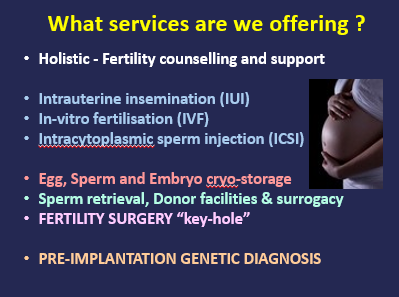
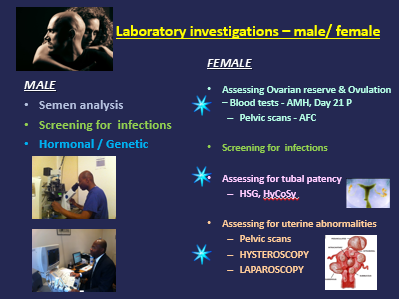
Q: What management options of infertility will be considered?
A:
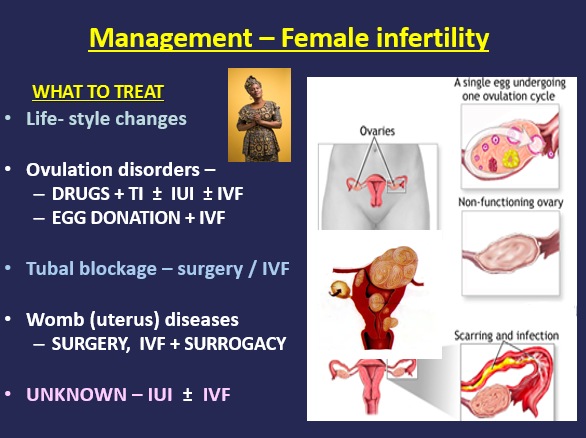
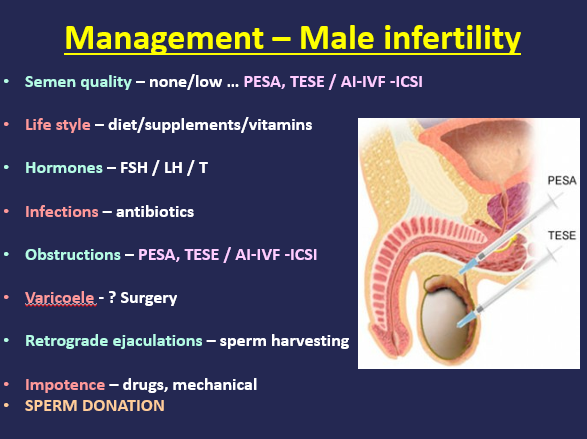
Q: What is intrauterine sperm insemination and IVF and when are they recommended?
A:
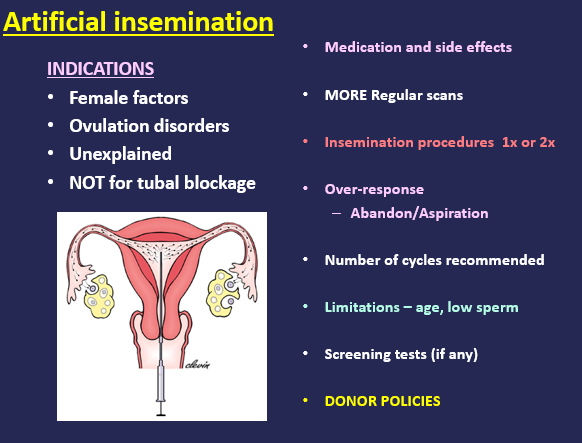
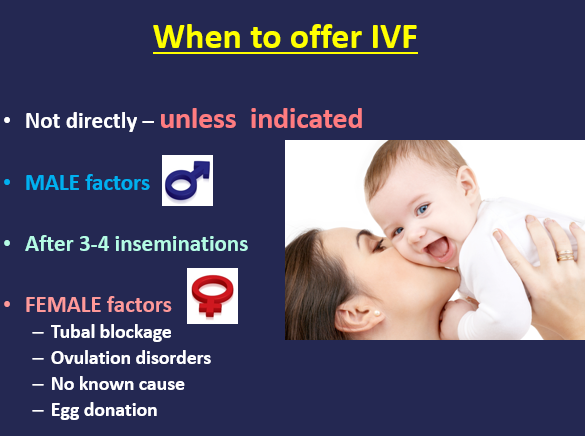
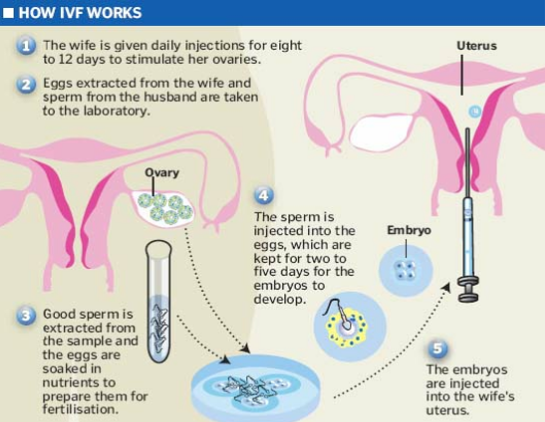
Q: What are your fertility treatment outcomes?
A: Fertility treatment successes are affected by many factors. Over 5 million babies are born by IVF throughout the world. But with an overall success rate of just 20%. There are a number of factors that affect the success of IVF, notable among these factors are the woman’s age, the quality of eggs decrease with age, whilst the likelihood of chromosomal defects and abnormalities increase – therefore, a woman over 40 have a 1 in 10 chance of conceiving, compared to the 1 in 4 chance woman under 30 have, averagely worldwide.
